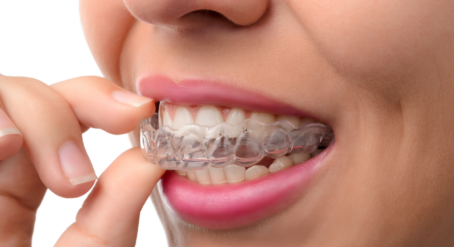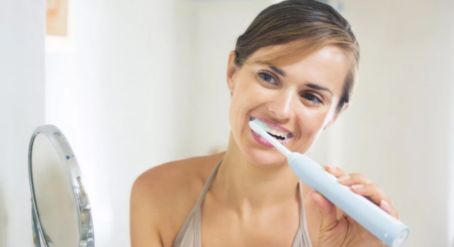A B C D E F G H I J K L M N O P Q R S T U V W X Y Z
Adjustment
An appointment where your treatment progress is evaluated, which may include changing wires, modifying wires or adding elastics.
Appliance
Any orthodontic device used to straighten teeth or change the position of your jaw.
Archwire
A metal wire attached to brackets on your teeth to help move them into a new position.
Band
A circular strip of metal that surrounds the tooth to support it. It is usually attached to the back teeth (molars) and becomes an anchor point for the orthodontic archwires or other orthodontic appliances during treatment.
Bonding
The process of attaching brackets to your teeth using a special safe adhesive.
Braces
Fixed orthodontic devices used to move teeth into their new position, usually consisting of brackets, bands and wires. Often, ‘braces’ is used by the public as the generic term for orthodontic appliances.
Bracket
A metal or ceramic attachment that is bonded to the teeth. They are used as an attachment point for the orthodontic archwire.
Bite
How the upper and lower teeth meet when they come into contact.
Bite registration
The process of making a wax or putty imprint of the way the teeth come together.
Bruxism
Grinding of the teeth, usually while sleeping. This can cause abnormal tooth wear and/or pain in the jaw joints.
Cephalometric Radiographs
An x-ray of the side of the head showing the positioning of the teeth, jaws and facial profile.
Ceramic braces
A form of orthodontic treatment similar to traditional metal braces where the brackets are made from tooth coloured or clear ceramic.
Clear aligner treatment
Orthodontic treatment that uses a series of removable clear plastic trays (ie. aligners) to gently guide teeth into their new position.
See also: ClearCorrect, Invisalign and OrthoCaps
ClearCorrect
A branded name for clear aligner treatment in Australia.
See also: Invisalign and OrthoCaps
Congenitally missing teeth
An inherited or genetic condition where a number of permanent teeth do not develop.
Crossbite
A malocclusion where the upper teeth bite inside the lower teeth.
Crowding
When there is insufficient space for teeth within the mouth to fit, often leading to crooked teeth.
Diastema
A gap between two adjacent teeth, usually at the front of the mouth.
Deband / Debond
The removal of cemented or bonded brackets and bands.
Deep bite
An excessive overbite or vertical overlap where the upper front teeth completely or mostly cover the lower front teeth. This bite problem can lead to increased wear of the front teeth.
Early orthodontic treatment
Also known as Phase 1 treatment. It takes place while the patient is still in the mixed dentition with some baby teeth remaining and/or before all of their permanent teeth have erupted. It is usually followed by Phase 2 treatment or braces several years later to achieve an ideal treatment outcome.
Ectopic Tooth
An ectopic tooth is one which develops in the wrong position. This can usually be moved into the correct position with orthodontic treatment.
Elastics
Small rubber bands that use gentle – but continuous – force to allow an individual tooth to be moved or for the jaw to be realigned. They must be worn and changed regularly by the wearer.
Extraction
The removal of a tooth.
Fixed appliances
Any orthodontic device (usually referring to braces) that is attached/cemented to the teeth and cannot be removed by the patient.
Fluoride
A mineral which reduces the risk of tooth decay and is often found in toothpaste and some mouthrinses. It is also found in the drinking water of many communities.
Frenum
The fleshy tissue that runs between the cheeks and gums, such as between the front teeth and upper lip and also under the tongue.
Frenectomy
The surgical removal of the frenum. This can include cutting or repositioning the frenum.
Functional appliance
A removable device that helps to correct the bite by repositioning the jaws. It must be cared for and worn faithfully to provide a successful treatment outcome.
Impacted tooth
A tooth that doesn’t erupt or only partially erupts into the mouth.
Impression
A mould of the teeth. It is made by placing an impression tray filled with the moulding material until it sets in the mouth. Impressions may be used to make study models or customised orthodontic appliances.
Invisalign®
A branded name for clear aligner treatment in Australia.
See also: Clear Aligner Treatment, ClearCorrect, Orthocaps
Ligating module
A small o-shaped plastic ring which is used to secure the orthodontic archwire into the orthodontic brackets on the teeth.
Lingual braces
A form of orthodontic treatment where the archwires and brackets are placed along the inside of your teeth, making them virtually invisible. They are usually custom-made for each patient and may cause difficulty with speech due to their location close to the tongue.
Malocclusion
The orthodontic term for teeth that don’t fit together when biting:
Class I – Where the molar relationship is typical but subsequent teeth have problems such as crowding and over or under eruption.
Class II :A malocclusion where upper teeth are positioned more forward than the lower teeth or the lower jaw is too far behind the upper jaw. See also overbite/overjet.
Class III: A malocclusion where the lower teeth are positioned further forward than the upper teeth, usually due to a small upper jaw or excessively large lower jaw. See also underbite.
Mandible
The lower jaw.
Maxilla
The upper jaw.
Mixed dentition
When there is a mixture of baby and permanent teeth in the mouth. This stage usually ranges from ages 6-12 years, or when a patient presents with congenitally missing teeth.
Mouthguard
A removable plastic device that covers the teeth and is worn during sports to protect the teeth and jaws.
Nightguard (Splint)
A removable plastic device worn at night to reduce the damage to teeth from clenching or grinding the teeth while asleep.
Open bite
A malocclusion where the teeth don’t make contact with each other. An anterior open bite is where the front teeth don’t make contact while the back teeth are touching. A posterior open bite is where the back teeth don’t touch while the front teeth are together.
Orthodontist
Orthodontists are dental specialists who specialise in the prevention, diagnosis and treatment of dental and facial irregularities to help correctly align teeth, bites and jaws, including straightening teeth. Orthodontists undergo an additional 3 years of specialist training on top of their general dental degree and focus on one thing and one thing only – orthodontics. Braces, plates and clear aligners is what they do – All day, every day.
Find a registered specialist orthodontist near you.
Overbite
Where the upper front teeth overlap the lower front teeth in the vertical dimension.
Overjet
Where the upper front teeth are located forward of the lower front teeth in the horizontal dimension. Think of a “jet” flying forward.
Palatal expander (RME / RPE)
An appliance used to widen the upper jaw or palate.
Panoramic X-ray (Also known as an OPG or Orthopantogram)
An x-ray of the head that shows all the teeth and jaws in a single image to help detect congenitally missing teeth and/or impacted teeth. It can also be used to assess the wisdom teeth.
Plaque
A film that contains bacteria and when not removed every day can lead to tooth decay.
Quadhelix
An appliance that is used to fix a narrow upper arch. It is fixed to bands on the molars and typically has 4 helical wire springs (hence its name).
Removable appliance
Any orthodontic device that can be removed by the patient, including plates, retainers, clear aligners and mouthguards.
Retainer
A fixed or removable appliance that is worn after braces are removed to help maintain teeth in their corrected positions. Faithfully wearing your retainers is the best insurance against unwanted tooth movement.
Separator
A plastic ring that is used to create space between teeth (ie separate). It can be used to allow metal bands to be attached to the teeth or to correct impacted teeth. They are usually worn up to 7 days prior to the bands being cemented.
Space maintainers
An appliance that can be used when a baby tooth is lost prematurely to maintain the required space for the eruption of the underlying adult tooth.
Supernumerary teeth
When extra teeth develop (in excess of the normal number of teeth). May also be an inherited condition.
Tongue thrust
Abnormal function of the tongue. Can sometimes lead to bite problems.
Twin block
A commonly used removable functional device that repositions the lower jaw to help correct significant bite problems.
Underbite
A malocclusion where the lower front teeth are located in front of the upper front teeth.
Wax
A soft material that can be used to prevent rubbing of the brackets and archwires, particularly in the early days of orthodontic treatment.











Hi Chris. We’re not an orthodontic practice, but a consumer resource for general orthodontic information.
You can search for an orthodontist near you using our finder tool here: https://finder.orthodonticsaustralia.org.au/